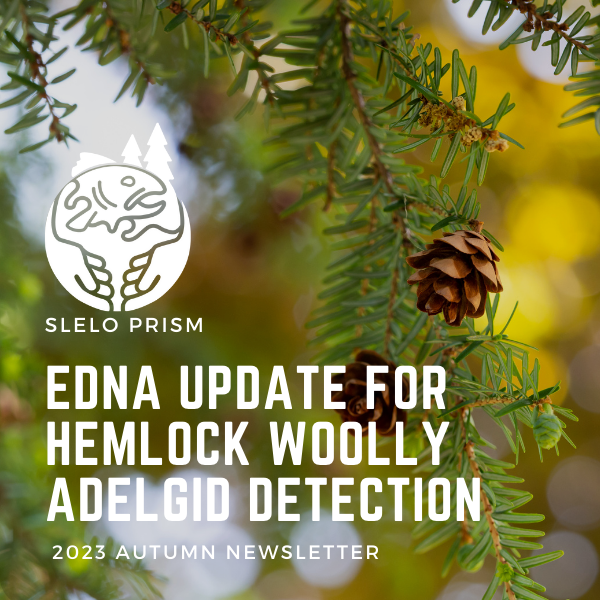This article was featured in the 2023 Autumn Newsletter by, Zack Simek, Conservation and GIS Analysit APIPP/SLELO.
This spring, SLELO’s Conservation and GIS Analyst collected hemlock branch samples from 18 locations in the PRISM to be analyzed by the New York State Hemlock Initiative (NYSHI) for the presence of eDNA. Sample sites were selected based on their proximity to known occurrences of HWA in the PRISM (within a 1, 2, 3, or 4-mile radius). In addition, four “early detection” sites were sampled, located greater than 4 miles from known occurrences from HWA. All “early detection” sites have been visually surveyed by SLELO staff for at least two seasons, providing a unique opportunity to compare the sensitivity of eDNA to boots on the ground surveys. Two “positive control” sites – where HWA is known to be present – were also sampled to validate the laboratory process.
Preliminary laboratory results found eDNA present at 6 of 18 (33%) of sample sites.
The positive eDNA sites included:
- Two “positive control” locations
- One site in the 0-1 mile buffer near Pine Grove
- One site in the 2-3 mile buffer at Lakeview Wildlife Management Area
- One site in the 3-4 mile buffer near Mexico Point State Park
- One “early detection” site at Altmar State Forest
Positive samples contained <1 to 1,953 copies of DNA/unit (mean = 518 copies/unit). The strongest signal was observed at both positive control sites and the 0-1 mile buffer site at Pine Grove. The weakest signal was observed at Altmar State Forest, with only 0.72 copies of DNA quantified per unit. The map below showcases the sample site results and locations.

Please fill out the form below to be added to our listserv and receive our seasonal newsletter, event invitations and other announcements.


